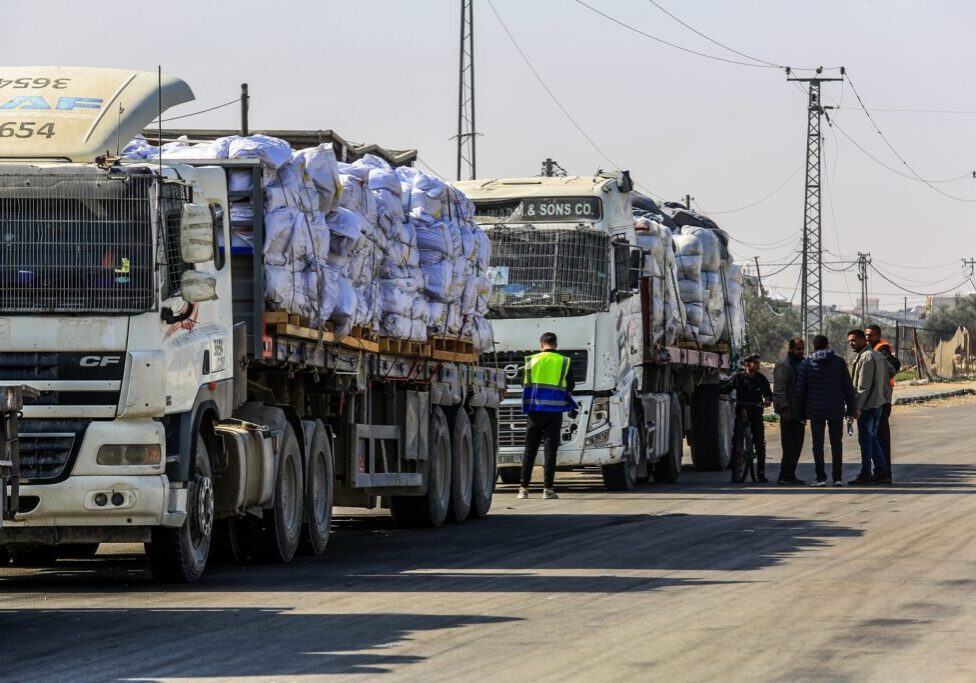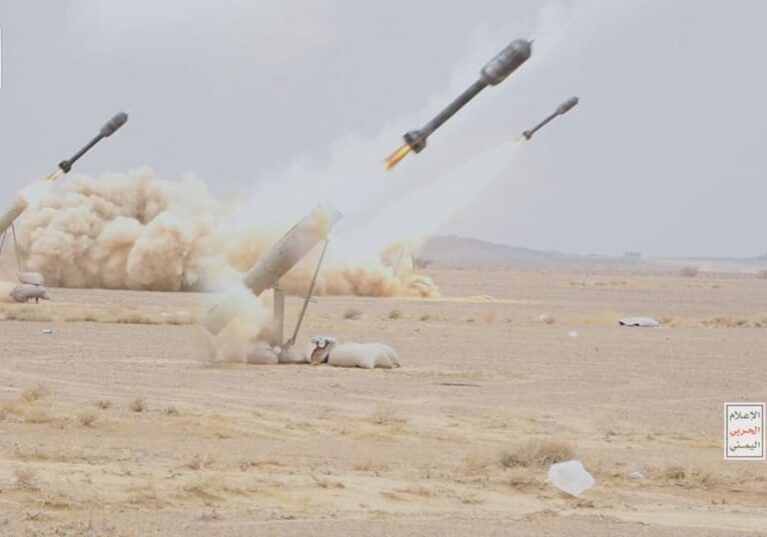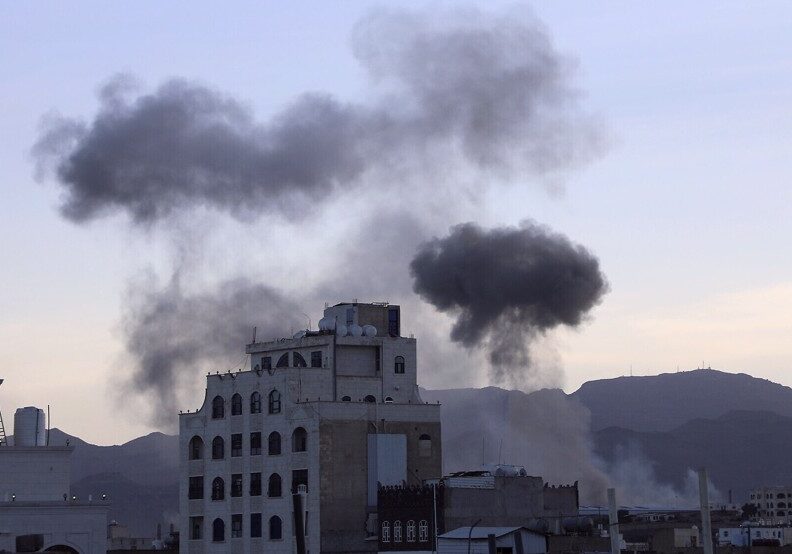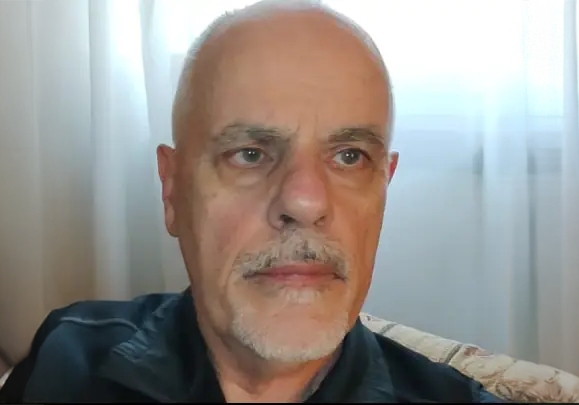Australia/Israel Review
Inside Free Syria
Feb 28, 2012 | Jonathan Spyer
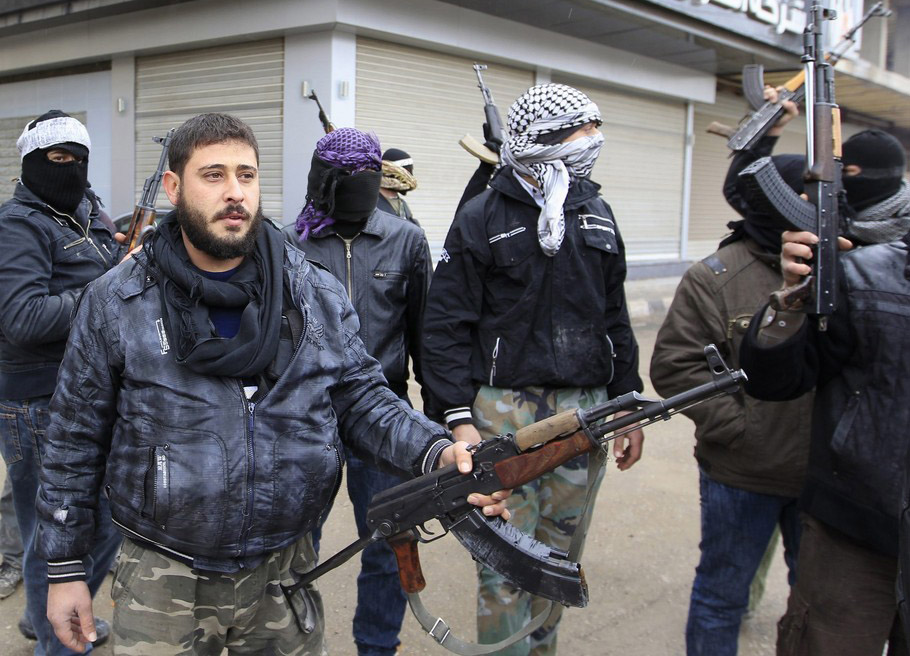
Jonathan Spyer
Idlib Province, Syria – The mountains outside Antakya were wrapped in black clouds the day we crossed the border from Turkey into Syria. The smugglers said this was a good sign as the Syrian Army patrols don’t care for rain and mud, and would tend to stay in their huts, making our crossing safer. That was how it turned out. We pushed up the border fence and crawled through at around 9 p.m. There were horses heavily laden with contraband waiting for us just inside. We rode them across the mountains in the rain and arrived in Syria without being seen.
I had made contact with the smugglers in Antakya through Syrian opposition friends, some days previously. This is the only way into northern Syria for journalists at the present time. I wanted to head to Idlib Province, one of the centres of the insurgency against the Assad family dictatorship, and now one of the regime’s main targets. My purpose was to gain an impression of the Free Syrian Army (FSA), the increasingly important armed element in the revolt against Assad, from inside one of its heartland areas.
Antakya itself is buzzing with the semi-visible activities of both the Syrian regime and the opposition. The Free Syrian Army in Antakya is immensely security-conscious, particularly since the kidnapping and forced return to Syria of its founding member, Colonel Hussein Harmoush, last year. But the activities of the FSA are also severely restricted by the Turkish authorities, which watch it carefully, and whose gaze it seeks to avoid.
Prior to crossing, I met with an FSA officer, Captain Ayham al-Kurdi, for an initial briefing. A native of Hama, the 30-year-old former signals officer in a Syrian anti-aircraft unit described to me how he came to the insurgency.
He was stationed near Daraa, a town close to the Jordanian border and the birthplace of the uprising, in mid-2011. He recalled his shock at witnessing the use of anti-aircraft munitions against civilian demonstrators in the area, as the Assad regime sought to murder the revolt in its cradle.
The use of these munitions was intended as a tool of terror. Their bullets kill people no more or less than regular ordnance. But from the regime’s point of view, they had the additional attraction of setting the bodies of those they hit on fire, turning the corpse into a symbol of deterrence to all who would challenge Assad’s rule. What they also did was to make Ayham al-Kurdi and others reassess their view of the government. Kurdi made his decision to desert, and help set up the beginnings of armed resistance to Assad.
Kurdi’s assessment of the strategic reality facing the Syrian revolution was grim: “If there is no international or Arab intervention,” he made clear, “this situation could continue for years.” The revolution has powerful enemies. The captain counted them on his hands, and the reasons for their enmity to the insurgency against Assad. First, Iran: “The Syrian revolution,” said Kurdi, “was a shock for the Iranian project. The Iranians want to control the region – Syria, Lebanon, Iraq, the Gulf. The Syrian revolution came to break this dream. So it is natural for the Iranians to help Assad.”
But together with the Iranians, there were their Lebanese clients, Hezbollah, and beyond this Russia and China, looming and impervious. “A great Arabic and international movement” is what Captain Kurdi wants to counteract this. He is not confident that it will come.
Before I left his office for the border and the smugglers, as a way of farewell, Kurdi shared with me a curious rumour – if it is a rumour – that I would hear repeated a number of times in the days ahead. It concerned the possible use of chemical warfare by Assad against protesters. The claim was made regarding the Homs area, which even more so than Idlib, is currently the main focus of the regime’s violence. Homs city is being subjected to a merciless pounding by government artillery.
In Talbisa, next to Homs city, Kurdi told me, they sprayed pesticides on demonstrators from the air. The soldiers were equipped with a new type of gas mask. “Assad said before that we were germs,” he concluded, “now we’re insects. I guess that’s progress.” He wished me luck inside.
On the highway, once in Syria, we were vulnerable to any sudden spot-checks the army cared to place. But once we entered Idlib province, the extent of the precarious gains made by rebel fighters in recent weeks became apparent. In towns like Binnish and Sarmin, the regime of Bashar al-Assad no longer exists, at least in visible form.
The roadblock that meets you at the entry to Binnish is manned by Free Syrian Army fighters. Armed opposition activists are everywhere. A makeshift clubhouse established by Abu Steif, the big man in the opposition in this backwater town, is buzzing with armed young men going in and out until the early hours of the morning. The flag of the Syrian revolution, which is the flag of the Syrian republic before the Ba’ath party took control in 1963, flies above the main square.
The limitations of the revolt are also immediately apparent from a perusal of the armoury assembled by the Free Army fighters in their Binnish headquarters. The characterisation often heard in the media of the FSA as armed only with Kalashnikovs is not quite accurate, but it’s not far from the truth. The AK-47 is indeed the main weapon of FSA fighters. In addition, I saw RPG-7s, heavy machine guns, and a mortar. Newly arrived body armour, smuggled over the mountains, was stacked up in boxes. There seemed to be no sign of first-aid kits, though, and little indication of any sophisticated communications equipment.
The weapons were the subject of much discussion, and discussion is what the Free Army members in Binnish do a lot of, in their clubhouse, drinking endless quantities of sweet tea and smoking.
The RPG-7, in particular, was an object of enthusiasm. I heard Abdo, a fighter of the FSA and a former Syrian tank corpsman, extolling its virtues to the heavily built, black-bearded Abu Steif on that first evening. “At 300 yards, Abu Steif, at 300 yards, and it can stop a tank. It can take a house down, too. You’ll see it when the time comes.” Abu Steif, a ruminative figure, a prominent local businessman before the revolt, reflected on this information before nodding and concluding, “Praise God.” Assad’s army last entered the town in force in October. No one thinks they won’t be back.
The fighters in Binnish are a mixed bunch. Many are army deserters, with harrowing tales similar to Ayham al-Kurdi’s. The names of the places differ. The details are largely the same: orders to shoot at civilians, a growing realisation of having been lied to, and then the decision to escape. The defections are recalled in graphic detail. Sometimes they involve the deaths of friends who sought also to desert, sometimes the turning of guns on fellow Syrian soldiers or officers.
But there is another type of fighter in the ranks of the armed opposition in the town. On the first evening, away from the main opposition centre, I met a group of FSA members returning from an attack on an army checkpoint outside Idlib city. Among them were representatives of a type of man immediately familiar to all observers of early 21st century Middle East politics. A type of man very calm, often smiling, with a sort of serenity about him. Bearded, invoking the authority of holy text, though rarely in a histrionic way. Salafi Islamist fighters are prominent among the FSA men in Binnish. They tended to keep away from Abu Steif’s clubhouse and to have their own gatherings elsewhere. They were local men, though, not foreigners.
I interviewed one of the Salafis shortly after they had returned from the attack on the checkpoint. He was in his mid-30s, black-bearded, and with the attitude typical of FSA fighters, a gloomy assessment of the balance of forces combined with a kind of generalised optimism. “We have no support from any country, and we receive no weapons from anyone,” he told me. “The regime, meanwhile, has Iran, Hezbollah, Russia, and China.” How long until Assad is destroyed? I asked. “I give it,” he said, in the manner of a physician revealing a prognosis, “roughly a month.”
The activists in Idlib province are keen to reassure you that the regime really has gone, without a trace, from the liberated zones. The reality is more complex. The creation of the free zones in Idlib, Homs province, and elsewhere is the most significant achievement to date of the Syrian revolution. The Assad regime, it should be remembered, was until recently a synonym for the airless, locked-down Arab nationalist police state. In Idlib province now, there is some room to breathe.
And yet, of course, the regime is still there. Its tanks and armoured vehicles are deployed some distance away, in the surrounding fields. But the unseen mechanisms of the dictatorship are present far beyond the FSA roadblock meant to keep out intruders.
Each Friday, large demonstrations take place across Syria, under a single slogan chosen by the opposition. On the Friday I was in Binnish, the designated slogan was “Russia is killing us.” A British Sky TV crew had entered the town, and was doing a live broadcast from a rooftop next to the rally. All had been peaceful. But as the cameras began to roll, in the area behind them, a large brawl unaccountably erupted. Within seconds, the Sky reporter’s jaunty copy about the revolution in Idlib province was being recited, absurdly, with a mass fist-fight going on behind it.
Opposition activists stepped in, and to the fury of the crew, stopped the live broadcast. To the practiced eye, what had taken place was very apparent. This was a provocation straight out of the dog-eared East German playbook of the Ba’ath regime. Primitive and low-tech, it may have been. But it succeeded in disrupting the only piece of live coverage coming out of Idlib province that day and served notice that whatever flag flew above the town square, the Assad regime had not entirely left. It turned out that some members of an unruly local clan had been paid to start the fight.
Getting from Binnish to neighbouring Sarmin requires venturing back onto the main highway to Damascus. We managed this without incident. In Sarmin, the armed element looks better organised, more professional than in Binnish. There is talk of around a thousand armed men in the town.
I met with one of the commanders, 25-year-old Lieutenant Bilal Khaibar, at a position prepared by the FSA at the entrance to the town. Khaibar, a seven-year veteran of Assad’s airborne forces, is impressive in the classic manner of an elite infantry officer – earnest, clipped, and precise. The outlines of his own story, and the reasons he joined the FSA, were by now familiar.
He and his unit were deployed in the south in the early months of the uprising. They were told that armed Israelis had crossed the border and that they were to engage them. On closing with the “enemy”, they discovered that it consisted of unarmed Syrian civilians. The troops were accompanied into the engagement by non-Arabic-speaking men, who Bilal later discovered were Iranians. These men were responsible for the execution of one of Bilal Khaibar’s brother officers, who refused to fire on civilians in the Daraa area. Khaibar made his way in June 2011 to the Free Syrian Army days after the killing of his friend.
Bilal Khaibar still wears his Syrian Army paratroopers’ wings on his FSA uniform, and was careful to explain to me that he does this because he regards himself as part of the legal army of Syria. “I am with the law, not against the law. The regime is fascist and criminal.” Nor does he have any illusions about what is to come. “We expect what happened in Homs to happen here. But even with our simple weapons, we are ready to fight. Either Bashar stays, or we stay.”
As for what can bring victory, again, the demands are familiar – above all, a buffer zone. A place to which refugees can flee, and from which fighters can organise. Without this, Khaibar sees no end to the situation.
And again, the curious rumour: Three times, he says, three times, in his clipped, officer’s way, the regime has used chemical weapons and pesticides against protesters in the Homs area.
“Freedom is the promise of God on earth,” Khaibar tells me. So if international help doesn’t come, he and his men will hold the Sarmin free zone for as long as they can, and afterwards fight, he says, “like peshmerga [traditional Kurdish guerrillas].” The regime, says Khaibar, “has the heavy weapons, but the people are with us.”
Lieutenant Bilal Khaibar of the Sarmin FSA was the most credible of the military men I met in Idlib Province. The presence of individuals of his type in the insurgency is an indication that it is real, it means business, and it will not easily be destroyed. However, without the buffer zone and the assistance that he and others repeatedly demanded, it is difficult to see how victory can come.
In October, when the army of Assad swept through Idlib province, they began their attack on Binnish from the graveyard outside of the town. On my last day in Idlib, two young fighters of the FSA proudly recounted their own role in the bloody battle in the alleyways of the first neighbourhood facing the graveyard, as the fighters sought to stop Assad’s army and irregulars from forcing their way in. “Assad wants to turn the whole of Syria into a graveyard,” one of them told me as we stood by the grave of Ahmed Abd el-Hakim, an FSA fighter killed by a sniper in the October clashes.
The Assad regime’s choice to launch the attack in a graveyard seemed particularly apt. Death and its political uses is the only currency in which this most brutal of dictatorships has ever learned to deal. It has traded in this coin, however, with vigor and skill, and it continues to do so.
Umm Maher, the mother of Ahmed Abd el-Hakim, later summed up for me what this has meant in human terms for the people of Syria.
Sitting in her front room, with her daughter seated next to her holding a picture of Ahmed, she told me that, “for 40 years we’ve lived like this – no law, no rights. We live with terror. We are made to live differently from all other people in the world by this regime. So we’re proud of our son, who was trying to end this. He was brave.”
Umm Maher’s words express a simple and obvious truth regarding the desire of human beings for dignity. As for the instruments in place in Syria for achieving this, the Free Syrian Army in Idlib province includes many courageous and capable men. Some of them are committed to Salafi Islamist ideologies. They are nearly all Sunni Arabs. There is a clear sectarian logic at work – alongside a desire to see the end of a regime that denies them the most basic and minimal of rights.
In terms of their capabilities, the Free Syrian Army remains something of a fiction. What exists on the ground is a conglomeration of locally organised militias, lacking any coherent central direction or chain of command, and with no real strategy for victory beyond the “buffer zone” constantly referred to.
For the people and the fighters of Idlib, the fight goes on. They know that once Assad is finished with Homs and Hama, and once he thinks he can get away with it, he will turn his attention back to the north. Then it will be their turn, and the dictator will exact a bloody and terrible revenge for their effrontery.
What could prevent this is an effective coalition to counter the anti-Western one (Iran, Hezbollah, Russia) that currently underwrites the dictator. This Western coalition can only happen outside the auspices of the UN, where Russia and China have already vetoed Security Council resolutions demanding Assad step down. Part of that Western response would involve turning the FSA from a collection of ragtag militias into a more formidable force. And it would commit to the creation of a free zone in Syria more solid and guaranteed than those zones currently held, with hope and courage, by fighters armed only with AK-47s and RPG-7s.
Jonathan Spyer is a Senior Fellow at the Global Research in International Affairs (GLORIA) Centre in Herzliya, Israel and the author of Transforming Fire: The Rise of the Israel-Islamist Conflict. © Weekly Standard, reprinted by permission, all rights reserved.
Tags: Syria


